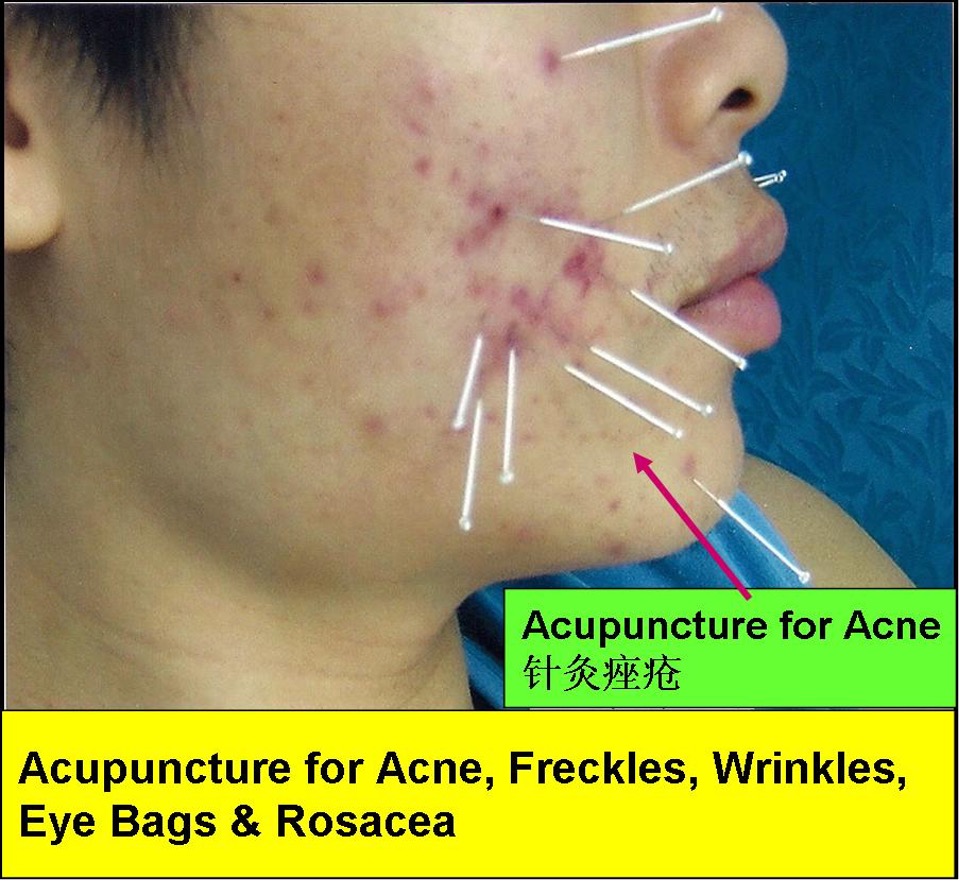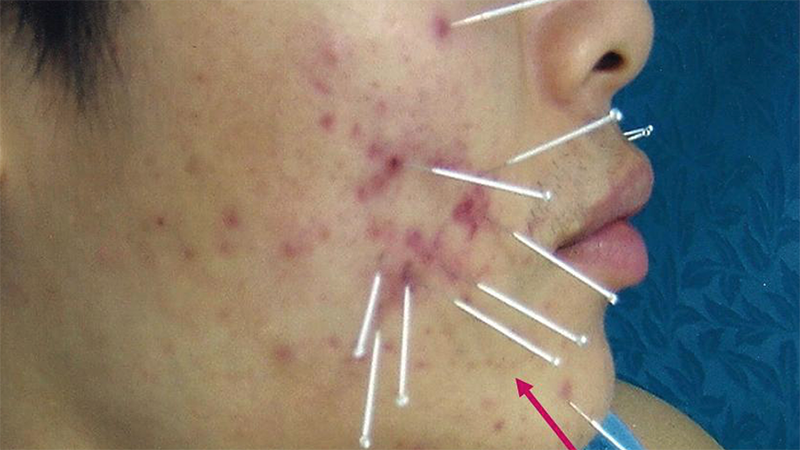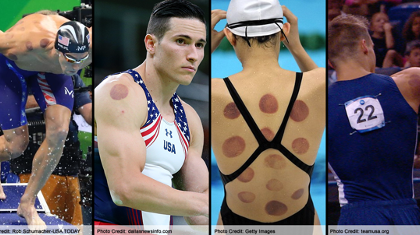Acupuncture for Acne : Treat Your Skin with This Ancient Treatment.
If you grapple with acne, you may have tried what feels like every topical treatment and medication available to get it under control.
If that’s the case for you, it might be time to consider acupuncture.
Acupuncture is a Traditional Chinese Medicine (TCM) practice that’s been around for centuries. It’s believed to work by stimulating certain pressure points that circulate energy, or qi, through the body.
By stimulating these points, it may be possible to ease acne symptoms and even the underlying issues that cause them, particularly hormonal imbalances.
Modern-day experts believe that acupuncture works by increasing circulation of blood and reducing inflammation.
Read on to learn more about the benefits of acupuncture for acne.
Add Your Heading Text Here
Acupuncture may offer benefits for several types of acne and other skin conditions, including:
One major benefit of acupuncture for treating acne is the minor side effects associated with acupuncture treatment.

For acne rosacea
According to TCM, rosacea is a heat condition, and most skin conditions that cause redness are due to heat.
“Acupuncture and herbs work to clear heat, not just from the face, but from the body in general,” says Gianna de la Torre, a licensed acupuncturist and the co-founder of Wildling. “Many heat conditions that appear on the skin are due to overall system imbalances, like yin deficiency. This is a TCM diagnosis that often causes heat to flare up to the face.”
In a 2018 studyTrusted Source, researchers found that a patient with rosacea who was treated with acupuncture for 30 minutes, 3 times per week experienced a significant decrease in symptoms and reported no relapse for 6 months post-treatment.
More research is needed to determine whether these results could be replicated with a larger sample size.
For hormonal acne
Hormonal acne is caused by hormonal fluctuations that accompany normal life processes, like menstruation, pregnancy, and menopause.
Acupuncture may help address the root cause of hormonal acne, hormonal imbalance, as well as the actual breakout itself.
“There’s a modality for needling the face to help the skin clear more quickly, but acupuncture and herbs are incredibly effective at regulating the hormones to curb hormonal imbalance,” says de la Torre. “This is one area where acupuncture really shines.”
A 2018 reviewTrusted Source found acupuncture to be effective at reducing menstrual pain, and another 2018 reviewTrusted Source illustrated acupuncture’s effects on hormone imbalance.
Studies show that acupuncture may also help regulate the endocrine system, which could help improve hormonal acne. Still, more vigorous studies are needed to show the effectiveness of acupuncture for regulating the endocrine system.
“This is achieved through reducing stress hormone levels, promoting circulation to the right tissues and glands, and reducing inflammation and toxins,” says Paul Kempisty, a licensed acupuncturist in New York state.
For acne scars
During an acupuncture session, the skin is punctured with a tiny needle. The body responds quickly with an accelerated wound healing response.
This may have benefits for scarring, including acne scars.
A 2020 study found that acupuncture could be used to treat skin wounds in diabetic patients, potentially accelerating tissue regeneration — though the study population was small.
One 2019 study suggested that acupuncture is effective at treating scars following tissue trauma, but more controlled studies are needed.
A 2015 studyTrusted Source noted that acupuncture may stimulate collagen production and relieve inflammation, though the particular procedure mentioned needs further investigation with a wider age range of participants.
“It’s the same mechanism that allows acupuncture to reduce fine lines and wrinkles,” Kempisty says. “Acupuncture insertion is also able to physically break down some built-up fibrosis and adhesions that can accompany scarred areas.”
For psoriasis
Acupuncture may help reduce itching, swelling, redness, and pain in people experiencing psoriasis.
A 2016 study noted that acupuncture, as well as acupressure, may offer positive outcomes for psoriasis. Still, more well-designed and methodologically rigorous studies are needed.
“Psoriasis is an autoimmune disease that creates heat, dryness, and stagnation on the surface of the skin,” de la Torre says. “To address this, [an acupuncturist] would be clearing heat, and balancing the body. In the area itself, we work to decrease the most noticeable symptoms, like itching, discomfort, and visible spread of the lesions.”
Treating psoriasis with acupuncture involves points all over the body, as well as local points around psoriasis plaques in a technique called “surrounding the dragon,” Kempisty notes.
For eczema
A 2020 study found that acupuncture may help ease the symptoms of eczema. According to the study, acupuncture was effective at reducing the following eczema symptoms:
- redness
- bumps
- itching
- inflammation
For allergies
According to Chinese medicine, allergies are indicative of an immune imbalance, and acupuncture may be effective in regulating the immune system.
“By choosing the correct points, we’re able to stimulate an underactive immune system to pick up its pace. We’re also able to calm an overactive immune system which reduces symptoms of allergies and inflammation,” Kempisty explains.
Does it work?
Studies suggestTrusted Source acupuncture can help ease a number of skin conditions, including acne. However, more large-scale studies are needed.
“Among all its other benefits, improving vitality, circulation, and detoxification are some basic reasons why acupuncture is often able to improve skin conditions,” Kempisty says.
Still, keep in mind that acupuncture treatment requires regularity. Treating acne with acupuncture will likely take multiple treatments at regular intervals.
It’s also important to note that conducting studies on acupuncture can be tricky.
“Because it’s hard to do fake acupuncture on a placebo group, and it’s also hard to administer acupuncture without knowing you’re doing it, it’s difficult to blind the clinician administering the study,” Kempisty says.
While more and more research is emerging, Kempisty also points to the intact lineage of TCM to support the efficacy of acupuncture.
“We have several thousand years of inference from [TCM] and culture to guide the clinical decision-making process,” he says. “Most licensed acupuncturists learn with experience what works and what doesn’t work for skin conditions.”
Cosmetic acupuncture vs. regular acupuncture: What’s the difference?
Cosmetic acupuncture mostly focuses on needles in the face. It may also be longer than a regular acupuncture treatment to allow time for the application of a Chinese herbal face mask and facial massage, using a gua sha tool or jade roller.
Regular acupuncture uses needles throughout the body, including on the face.
Some acupuncturists incorporate needles on the body. This is used to rejuvenate the face due to the interconnectivity of the meridians, or channels of energy, in the body.
Safety
Acupuncture is a safe treatment modality with a very low risk and contraindication profile, but the most common side effect is bruising.
It’s important to go to an acupuncturist who is knowledgeable and has experience treating skin.
“A trained, licensed acupuncturist will know which acupoints should be avoided for certain people and conditions, like if you’re pregnant, for example,” de la Torre says.
While acupuncture is generally considered safe during pregnancyTrusted Source, be sure to seek out a licensed, experienced practitioner.


